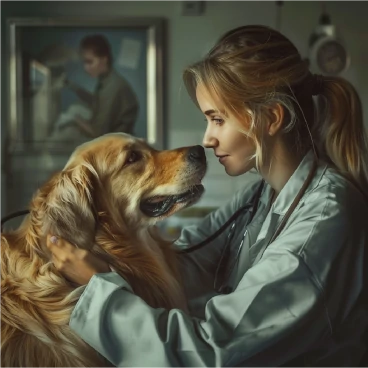
Acute renal injury has been the most common presentation of canine leptospirosis in recent years. Dogs affected by leptospirosis may exhibit clinical signs including lethargy, anorexia, vomiting, abdominal pain, and polyuria, oliguria, or anuria.
Serum biochemistry or serum blood gas analysis may show abnormalities such as azotemia, hyperphosphatemia, metabolic acidosis, hyponatremia, and hypo- or hyperkalemia.
Urinalysis may reveal abnormalities such as hyposthenuria, isosthenuria, or minimal concentration; proteinuria; glucosuria (with normal blood glucose); cylindruria; hematuria; or pyuria.
Puppies between 6 and 9 weeks old should receive a C3 vaccination to protect against Parvovirus, Distemper, and Hepatitis. At 10 weeks of age, they should receive a C5 vaccination, which adds further protection against other diseases.
Combination of the following findings: acute azotemia, cholestatic liver disease, mild to moderate thrombocytopenia, and glucosuria with normal blood glucose.
Serological tests to detect antibodies, combined with a PCR assay to detect organisms.
The results of all diagnostic tests should be interpreted in light of vaccination history, clinical signs, and clinical-pathological findings of the animal. The table Comparison of tests used to diagnose leptospirosis in dogs summarizes the tests currently available and their advantages and disadvantages. A combination of acute and convalescent MAT titers and PCR assays in blood (early disease stages) or urine (later disease stages) is recommended.
Supportive care, along with specific antimicrobial therapy.
Doxycycline to eliminate the leptospiremic and carrier phases of the infection.
Supportive measures for acute kidney injury and liver disease may include: fluid therapy, with electrolyte supplements as needed; correction of acid-base disorders; antiemetics; phosphate binders; hepatic support medications; or appetite stimulants.
Leptospirosis, also known as Weil's disease, can be prevented through the administration of the C7 vaccine, a commercial bacterin specifically formulated for dogs. This vaccine targets the serovars Canicola, Icterohaemorrhagiae, Grippotyphosa, and Pomona, which are the primary strains responsible for leptospirosis infections in canines. While it's uncertain if vaccinated dogs are entirely immune to other serovars, some experimental evidence suggests cross-protection.
The currently available vaccines provide robust protection against leptospirosis for at least one year, effectively reducing renal colonization and urinary shedding. Despite concerns about potential hypersensitivity reactions post-vaccination, studies indicate that vaccination against Leptospira is generally safe for dogs. There hasn't been a significant increase in adverse reactions compared to other vaccines, although reactions might be more likely with highly purified vaccine formulations. The previous recommendation of biannual vaccination is no longer justified due to the effectiveness of the current vaccines.
Because leptospirosis is a zoonotic disease, all veterinary personnel should take appropriate precautions when handling infected or suspected animals. Isolation of these dogs is not necessary; however, they should be nursed with barrier precautions, paying special attention to avoiding skin or mucous membrane exposure to urine or blood. Infected dogs should be allowed to urinate in designated areas that can be subsequently cleaned and disinfected. All routinely used disinfectants kill the organisms. Owners of newly diagnosed dogs with canine leptospirosis should be informed about the zoonotic nature of the disease and advised to consult their physicians if they have any health concerns. Owners should wear gloves when cleaning urine and wash their hands after handling the dog, at least until antimicrobial treatment is completed.